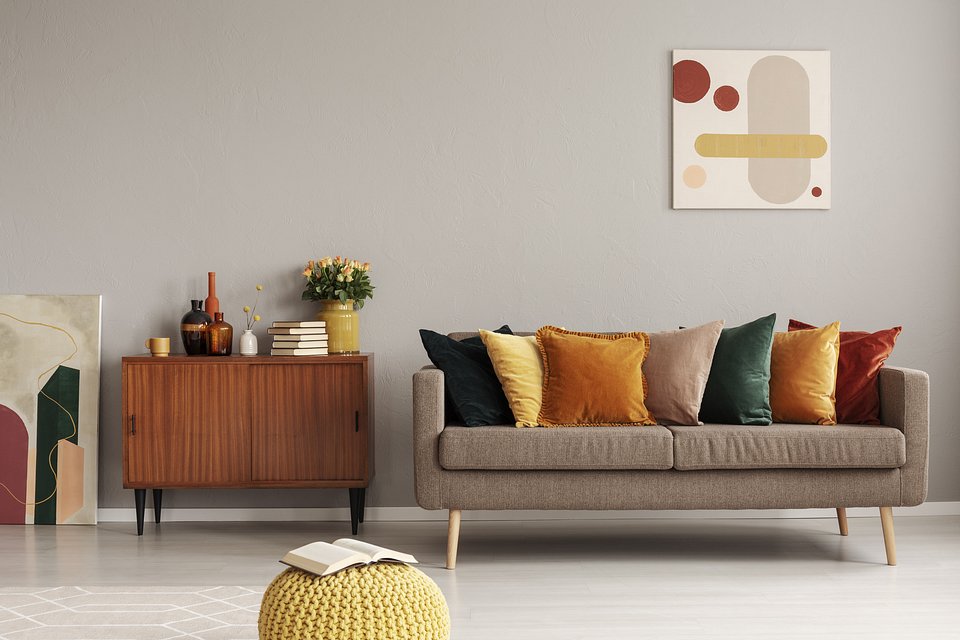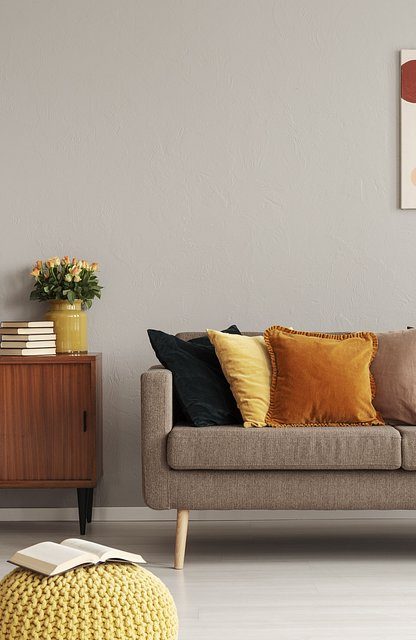In the times of the Polish People’s Republic, small-sized properties were a recipe for housing shortages and an opportunity for a less affluent part of society to have its own home. Today we can observe a return to these formulas, however, relatively small flats aspire to the name of an apartment on the premium market.
Inspirations of the past epoch have been noticeable in the real estate industry for several years now. The most visible phenomenon is the return to the cult furniture from the period of the Polish People’s Republic. Designed in 1980, the Lotos chair, the iconic 366 chair by Józef Chierowski, and even the segmented “Kowalskis’ wall units”, which can accommodate many objects, are again desirable as stylish elements and a means of aesthetic expression. Such furniture can be found in many luxury apartments.

The trend is also returning for smaller floor areas in housing. In the Polish People’s Republic the size of flats was imposed by the socialist-realist system, in 1961 there was only 6 sqm per person, later the standard was increased to several sqm. These regulations influenced designs (many cramped flats were built), but also forced the production of compact furniture, such as the aforementioned wall unit.

The flats under construction today no longer have an allocation of space imposed by the system, but ergonomics and multi-functionality have again become crucial in organising space. The use of new technologies is combined with old concepts. However, the pre-1989 building standards are no longer just about mass projects for less wealthy customers, but have also become part of the premium segment, including apartments for investment purposes. By using such solutions, premium market units lose their luxury character.
– We are witnessing the construction of more 3-room apartments with a relatively small area, but with maximum use of limited space. So we can safely say that the “charm of the PRL” has triumphantly returned. This could be seen already after the crisis of 2007-2008, today many people buy smaller flats again. According to the NBP report for the second quarter of 2019, Warsaw, Kraków and Gdańsk had the highest number of units available on the market in the range of 40.1-60 sqm[1]. In the past, the principle of ” compact but my own” prevailed, but today a similar level of comfort is offered by a much better-sounding “minimalism”, increasingly present in the premium segment. Unfortunately, under the guise of luxury apartments, solutions straight from the communist era are often concealed – said Agata Karolina Lasota, Managing Director of LBC Invest.
And this segment of the market is growing rapidly in Poland. According to the “High Level Book” report prepared by High Level Sales & Marketing, in 2018 it grew by nine percent and was valued at over PLN 1.3 billion[2]. On the podium in terms of average price per square meter, which has to be paid to become a premium property owner, were, among others, Warsaw with PLN 25,000, Tri-City with PLN 17,500, as well as Wrocław with PLN 14,500 and Kraków with PLN 13,800. In the first half of 2019, the average price of this segment in Warsaw increased to 28,000,000. 3 Such development is also driven by the capital of foreign investors.
– Foreign individual investors and investment funds are active in the Tri-City housing market. Most often this applies to Norwegians, Swedes, British, Germans and Russians. It is a result of the positive image of the region, as well as an attractive location, in terms of tourism, but also business and science. It is worth noting that for three years now, companies and individuals from the European Economic Area and Switzerland have been able to purchase real estate in Poland without special permits. Therefore, we can expect that the number of investors will increase and the Tri-City will still be highly rated as a place to invest in real estate – summed up Agata Karolina Lasota.
The memories of the architecture of the Polish People’s Republic are dominated by gloomy prefabricated blocks of flats and cramped interiors. The units currently being built on the market have a much higher standard of finish, and are not devoid of the latest technologies, but still many solutions bring to mind the times of a bygone era. The actions of investors have a decisive influence on the future of the premium real estate market, in which one can increasingly feel the “charm of the communist era”.










